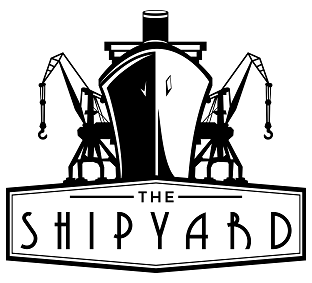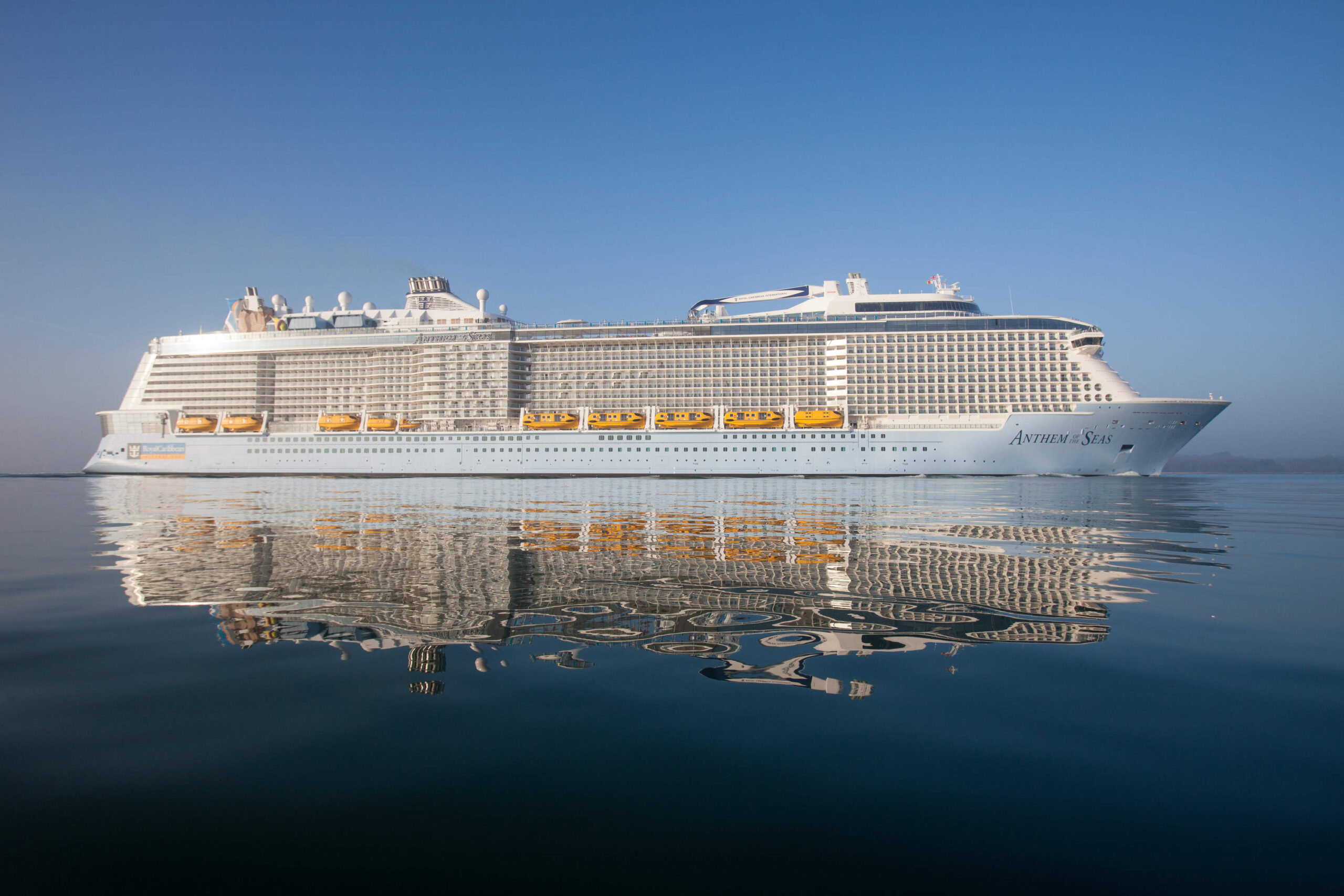The number of people who choose to spend their vacation on a cruise is growing worldwide. With each new cruise ship on the market, cruise lines compete who will offer the most attractions and excitement on board. While passengers in the past had to content themselves with taking walks, reading books, and playing deck games on board, passengers on modern day cruise ships can go on water rides, surf on a simulator, go rock climbing, play a round of Streetfighter in the gaming arcades, or practice their swing on miniature golf courses. When it comes to food, the choices are no less impressive. Each new ship offers numerous buffets, à la carte restaurants, cafes, pubs, and bars where passengers can enjoy whatever foods and drinks their hearts desire. For those who wish to lay back and relax, the ships have their own spa areas with saunas, treatment rooms and hair salons. Simply put, the cruise ships of today are giant floating palaces of fun.
But down in the decks below the waterline there is a separate world, where fun is the last thing on people’s minds. Here, in the servicing rooms of the ship and in the crew’s headquarters, hundreds of men and women spend up to 7 months working continuously away from home. They sleep in cramped cabins with no windows and work long shifts for many days in a row, with no weekends and only limited breaks throughout the day.
Airing Dirty Laundry
The laundry rooms on cruise ships are usually located on the decks beneath the waterline and are always off-limits to passengers. The world’s largest cruise ships can carry up to 6,680 passengers and 2,200 crew. With so many people on board, the amount of dirty laundry that piles up each day is no joke – tablecloths from the restaurants, towels from the bathrooms and spa areas, sheets from the beds, as well as the uniforms of the entire crew.

To put things into perspective, Royal Caribbean’s Oasis of the Seas, washes some 42,185 kg of laundry on embarkation day. Such logistical challenges require ingenuity and efficiency. The laundry is washed in huge industrial washers, using condensation water from the air-conditioning system. The water is heated up using heat from the engine that would otherwise go wasted. A special environmentally friendly, phosphate-free detergent is used for all laundry.
After the laundry is washed, it is transferred by hand to the four Cissell dryers and five tunnel dryers.

Once dry, the bed sheets are transferred and fed one by one by hand into special presses that flatten and fold them. A mind-blowing 29,000 towels on board are folded by hand by crew members who work 24 hours a day in two shifts.

In addition to the professional laundry services offered on board, some ships have laundry rooms on each passenger deck where individuals can wash, dry or iron their own clothes if they wish. This comes in especially handy for round-the-world cruise passengers, who have to keep their luggage within reasonable limits. Some ships don’t charge extra for using the laundry facilities; on others, the machines are coin operated.
Soul Kitchen
Like the laundry, most food preparation takes place in areas that are inaccessible to passengers – in the storage and refrigeration areas located down in the hull, in the kitchens, and in the many preparation stations.

Taking Cunard’s Queen Mary 2 as an example, a kitchen chef, 150 cooks and 85 assistants ensure that the 3,090 passengers and the 1,253 crew members are served a large variety of dishes every day. The chief kitchen chef has his own office behind the main kitchen, from where he manages his team. Each separate restaurant has its own separate kitchen, chef and staff. The list of daily tasks is extensive, ranging from washing and peeling vegetables, through cutting of fish and meat, and all the way to mixing sauces and making final decorative touches for the finished meals. And for each task in the chain, there is a team of people who tirelessly perform their duties. In addition, a team of bakers, confectioners and chocolatiers take care of the breads, pastries and desserts on board.

There are 13 people responsible for the planning of menus and the management of food supplies. Before each voyage, the team takes into consideration the ports where the ship will stop, how many days at sea the ship will have without calling at a port, and which nationalities will be predominant on board. Based on this information, the types of meals are planned, amounts of needed ingredients are calculated and supplies are ordered.
For example, transatlantic crossings on the Queen Mary 2 predominantly attract passengers from North America and Western Europe, whose traditional diet is rich in beef and pork. Therefore, when the ship is docked in New York, the food planners order 9,800 kg beef and 6,500 kg pork for the 6-day journey, in addition to the 15,200 kg vegetables, 11,000 kg fruits, 2,800 kg poultry, 2,400 kg fish, 1,400 kg seafood, 20 kg caviar, 36,000 eggs, 20,000 liters of milk, 13,500 liters of coffee, 3,700 bottles of wine and 2,500 bottles of champagne.

For the 4,000 people on board the Cunard liner, an average of 20 tons of food and 5,000 liters of soft drinks are consumed per day on board. More than 30 different menus are created for each day at sea and around 16,000 meals are prepared daily. Each year 1.5 million liters of fruit juice, 1.5 million cocktails and 60,000 pints of beer are served on board.
With these quantities, one naturally wonders how all this food is managed and served on time. In the Britannia restaurant, each table has an assigned waiter who writes down the order on a piece of paper and brings it to the main kitchen. Once in the kitchen, the ordered dishes are entered into a Dinner-Count-System where each dish is prepared in the order it entered the system. Large displays on the walls show how many portions are left of each dish.

If the kitchen is running out of a certain appetizer, for example, but the counting system shows that additional people have ordered it, the chef can order more of that specific appetizer to be prepared before the kitchen runs out. In this way, on a table with 10 people, everyone will get their food at the same time for a reasonably short wait, even if they all ordered different dishes. And this does not change even when the restaurant is working at its full capacity of 1,248 guests.
In addition to the waiters and cooks, 90 people are responsible for loading the giant dishwashers and keeping the cooking surfaces and areas clean. There are specially appointed officers who ensure that hygiene and quality standards are met during food preparation.
A Clean House is a Happy House
Embarkation day is without doubt the busiest day for housekeeping. Passengers are typically asked to clear their cabins no later than 9am so that staff can start preparing the cabins for the new passengers who will board the ship just hours later. In reality, passengers often take more time to clear their cabins which additionally shortens cleaning time.

Each member of the housekeeping staff is assigned a number of cabins, usually around 20. In the few hours available, one cabin steward changes bed sheets, puts new towels, bathrobes and toiletries in the bathroom, cleans the toilets and the showers, wipes the floors, vacuums the carpets, checks and cleans drawers and closets, dusts surfaces, makes sure the correct number and sizes of life jackets are in the closet, refills the minibar and changes the glasses, washes the balconies and windows, throws out any trash left behind, rearranges the double bed into twin beds or vice versa, brings in baby cots as needed, and ensures that none of the printed safety instructions and service folders are missing from the cabin. On some ships, stewards have an assistant who helps them with the bathrooms, with taking dirty laundry down to the laundry room, and with bringing more supplies up to the deck.
On non-embarkation days, the job of the stewards is less stressful in terms of time pressure but not any less tiring. In the morning, the steward takes the housekeeping trolley up to the section of the ship they are responsible for and while getting everything on the trolley ready, keeps an eye out for which guests have left the cabins to go to breakfast. Once in the cabin, they clean the sleeping area and the bathroom, change the towels and refill the minibar. Sheets are usually changed every other day, unless otherwise requested by the guest. In the early evening hours, the stewards once again enter the cabins to get them ready for the night, to put next day’s printed programme on the bed, and to make sure that everything is clean and in order. The working day of the stewards usually ends between 9 and 10pm.

On most cruise ships, the job of the cabin steward extends beyond housekeeping and involves helping out passengers with any special requests, providing information about embarkation and disembarkation day, as well as information about their assigned safety drill location. A major portion of stewards’ salaries comes from the tips they receive from guests and therefore great effort is put into keeping up a pleasant mood no matter how tiring the work may be.
Part 3 Coming Soon…
In next week’s post, you can find out what goes on in the engine room and on the bridge of a cruise ship.
The Shipyard

